
Do you have a question about the Panasonic VIERA TH-L32U30M and is the answer not in the manual?
| Screen Size | 32 inches |
|---|---|
| Resolution | 1366 x 768 |
| Display Type | LCD |
| HDMI Ports | 2 |
| USB Ports | 1 |
| Weight | 7.5 kg |
| Backlight | LED |
| Aspect Ratio | 16:9 |
| Refresh Rate | 50 Hz |
| Panel Type | IPS |
| Weight with stand | 9 kg |
Guidance on safe handling and use of the mains plug and lead to prevent hazards.
Ensuring safe installation and proper placement to prevent damage or injury.
Warnings against TV modification, foreign objects, and child safety with SD Cards.
Advice to prevent damage from moisture, rain, direct sunlight, and heat sources.
Precautions for TV cleaning, unplugging for long periods, and heat dissipation.
Warnings on panel impact, volume exposure, and air vent blocking.
Information on auto power standby, equipment interference, and transport.
Lists standard accessories and details optional accessories available for purchase.
Information and precautions regarding the installation of a wall-hanging bracket.
Instructions and warnings for attaching the TV pedestal securely.
Procedure and precautions for inserting batteries into the remote control.
Diagram illustrating the various connection terminals on the rear of the TV.
Key notes regarding cable placement, signal quality, and aerial system connections.
Identification and function of physical controls on the TV unit, including ports and indicators.
Explanation of the functions of various buttons on the remote control.
Functions for turning the TV on/off, changing channels, volume, and input modes.
Buttons for accessing menus, VIERA TOOLS, and displaying information.
Buttons for Media Player, Teletext, Aspect ratio, Surround sound, and other special features.
Steps for powering on, selecting language, and selecting area for auto tuning.
Guide to setting up the wireless LAN connection for network features.
Instruction to connect the Wireless LAN Adaptor to the TV's USB port.
Choosing connection method and entering the network encryption key.
Confirming the wireless LAN connection setup with 'Yes'.
Procedure to turn on the TV, select TV mode, and change channels.
Explanation of functions like Hold (freeze picture) and Off Timer.
Explanation of the information banner and selectable settings for the current program.
Function to switch to the previously viewed channel or input mode.
How to select and adjust different aspect ratio modes for optimal viewing.
Procedure to select and set the desired on-screen display language.
Explanation of FASTEXT and List modes, and how to switch and select pages.
Functions like HOLD, INDEX, and calling favourite pages in teletext mode.
Viewing TV and Teletext in multi-window and storing frequently viewed pages.
Viewing specific sub-pages and watching TV while teletext updates.
Accessing the Input Selection menu and selecting connected equipment.
Viewing the selected input source and its current settings.
Displaying and selecting features available through VIERA TOOLS.
Instructions for using specific VIERA TOOLS features like VIERA Link Control.
Displaying, selecting, and adjusting settings within the TV menus.
Information on resetting picture, sound, or all TV settings to default.
Explanation of viewing modes like Dynamic, Normal, Cinema, and Game.
Adjusting core picture elements like brightness, contrast, colour, and sharpness.
Fine-tuning picture quality with settings like colour density, noise reduction, and eco mode.
Settings related to screen display, white balance, and gamma curve adjustments.
Adjusting image resolution, aspect ratio, colour systems, and input settings.
Selecting sound modes (Music, Speech, User) and adjusting Bass, Treble, and Equalizer settings.
Configuring speaker output, headphone volume, and overall volume levels.
Enabling V-Audio or V-Audio Surround for immersive audio.
Adjusting speaker distance, multiplex sound, and SPDIF output settings.
Configuring settings for HDMI input terminals (Digital/Analogue).
Resetting present sound settings for Mode, Balance, Headphone Volume, and Surround.
Setting the automatic turn-off timer and configuring energy-saving modes.
Managing TV channels via auto tuning, manual tuning, and channel list editing.
Setting up child lock for content access and changing the on-screen display language.
Configuring teletext modes, character sets, and input terminal labels.
Adjusting banner display duration and game mode playback time.
Managing VIERA Link features for interconnected device control and power saving.
Configuring network connections and accessing DivX Video-on-Demand.
Resetting TV to factory defaults and viewing system information.
Configuring automatic standby modes and power saving features.
Ensuring TV is in the correct mode and accessing the setup menu.
Selecting tuning functions like Auto Tuning or Manual Tuning.
Managing channels by skipping, renaming, or moving them in the list.
Starting and completing the automatic TV channel tuning process.
Manually setting TV channels, including fine-tuning and storing.
Accessing the menu, setting the PIN, and preparing to lock content.
Selecting specific channels or inputs to lock using the child lock feature.
Procedure to change the existing child lock PIN number.
Selecting the Display Settings menu and Input Labels option.
Using user input to assign custom labels or skip input terminals.
Accessing the menu and selecting the System Menu for reset.
Confirming the reset and following on-screen instructions to restore default settings.
Instructions for inserting and removing SD Cards and USB Flash Memory.
Switching to Media Player and selecting content types (Photo, Video, Music).
Viewing photos, sorting, setting background music, and displaying photo information.
Playing video files, viewing scenes, and setting video playback options.
Playing music files, selecting folders/files, and configuring music playback settings.
Explanation of DLNA Certified technology and using media servers.
Instructions for establishing and configuring network connections.
Steps for accessing internet content through the TV.
Illustrations of different network connection types (Wireless LAN, Direct, Internet).
Configuring wired and wireless network settings, including IP/DNS and Proxy.
Performing a test to verify the network connection status.
Selecting media servers and files (photos/videos) for viewing.
Guide for operating playback of photos, videos, and music via DLNA.
Explanation of VIERA Link and HDAVI Control for HDMI interoperability.
Table summarizing VIERA Link features and equipment compatibility.
Diagrams showing recommended connections for VIERA Link compatible equipment.
Managing Power on/off link, Standby Power Save, and Intelligent Auto Standby.
Using Pause Live TV and Direct TV Recording features with a DIGA Recorder.
Operating connected equipment menus using the TV remote control.
Selecting and controlling theatre speakers and multi-channel sound output.
Table showing which equipment connects to which TV terminal.
Details of the HDMI terminal pin connections and compatibility.
Connecting VCRs, DVD Recorders, and DVD Players for playback.
Connecting HDMI devices and amplifiers for home theater audio.
Connecting USB devices, camcorders, game equipment, and network devices.
Connecting a PC and using conversion adaptors if necessary.
Table showing channel allocation for different regions and broadcast systems.
Details on supported HDMI features like input audio and video signals.
Information on PC signal input compatibility, resolution, and connection notes.
Table of input signals compatible with COMPONENT, HDMI, and PC connections.
Notes regarding PC signal display, reformatting, and clarity.
Selecting sound output modes for stereo and bilingual broadcasts.
Details on SD Card/USB formats, types, and handling precautions.
Supported file formats and restrictions for photos and videos.
Supported music file formats and information on DivX video playback.
Details on DivX subtitle files and their display and management.
Information on DivX VOD registration, playback, and content limitations.
Table of network-related on-screen messages and their meanings.
Troubleshooting steps for common problems like noise, no image/sound, or distorted display.
Solutions for common problems related to image, sound, network, and remote control.
Instructions for regular and stubborn dirt cleaning of the panel, cabinet, and pedestal.
Instructions for cleaning the mains plug and information on product disposal.
General specifications including power, display, audio, PC input, and reception details.
Detailed specifications of all TV connection terminals, especially HDMI.

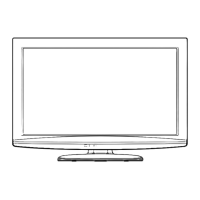
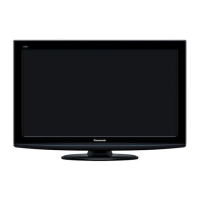



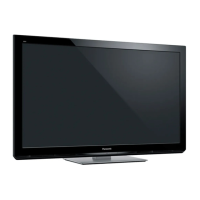
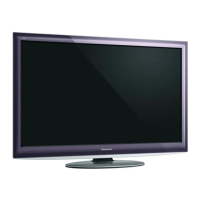
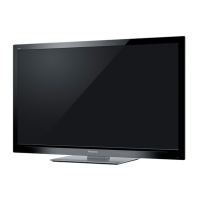
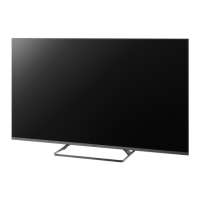
